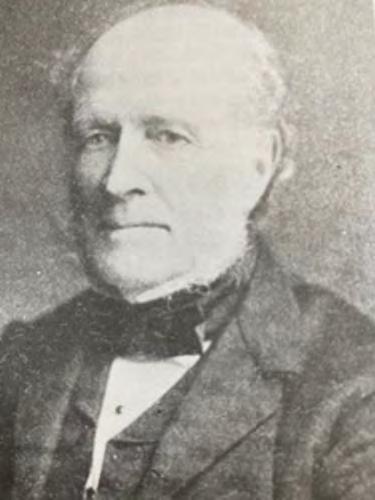
2 minute read
ROBERT ATKINSON GORRELL (1804 – 1904)

by Chris Weston
Advertisement
Every day, dozens if not hundreds of motorists travelling through Coltishall on the B1150 may have no idea that at one point, they pass a former hospital site. The building still stands today, but now accommodates a different type of residents. But where was it and who provided it? More on this in the next issue, but for now, we consider the life of its founder, whose generosity to the villagers extended way beyond any expectations.
The Coltishall Cottage Hospital was on the same side of the road as today’s local Pharmacy (which was once a branch of Roys). The property stands back from the road. Robert Atkinson Gorrell was born in Kirby Lonsdale, Cumbria and was duly christened there on 1st January 1806. Before starting work at age 15, with a Bradford firm of Worstead cloth spinners. he was educated at his local grammar school.
The cloth spinners also had at that time, a branch in Duke Street, Norwich and in 1841, Robert moved to Norwich to take charge of it. From here, cotton, silk and worstead yarn were supplied directly to the textile trade. Outside work, he firstly lived in Unthank Road, subsequently serving as both a city Councillor and Magistrate, apart from mixing widely in leading social circles. His shrewd commercial judgement and seemingly endless energy also brought Robert prosperity. On 4th August 1835, he married Elinor Cooper, in Bradford. Robert gradually created a lengthening list of generosities to the local community. Not only did he become the richest man ever to live in Coltishall but was also its first centenarian. His lifetime donations included a Cottage Hospital, a Church Vestry and throughout the village, its first iron lampposts, forming part of the street lighting network. Strangely perhaps, he didn’t reside in the main village, but at the Old Hall in nearby St. James, listed in various Directories as a hamlet of Coltishall. In local circles Robert Gorrell was additionally a Landowner; Magistrate; Rector’s Churchwarden; Parish Guardian and a School Governor.
During 1877, Robert Gorrell presented to the village a clock costing £173. To enable everyone to see it, the decision was made to install the clock in the church tower, which geographically, was also considered central to the locality. In 1980, the clock was overhauled – as a further gift – at a cost of £445, from Mrs. Beevor, a local parishioner. Also in 1877, a Vestry was added to the parish church at the joint expense of Robert and the then Rector, Joseph Thackeray.
In 1879, Robert became Coltishall’s First commuter, when the new branch railway line between Aylsham (North) and Norwich via Coltishall and Wroxham opened on 8th July that year. And for several years he travelled daily to and from Norwich. The line survived in its original form until 15th September 1952 when it closed to passengers. Freight trains then rumbled on until the station’s final standard gauge closure on 19th April 1965. But it was reborn on 10th July 1990 as the narrow-gauge Bure Valley Railway which still operates passenger trains today, over the original Hoveton & Wroxham to Aylsham route.
Meanwhile in 1880, Robert Gorrell gained a seat on the Norwich Union Board of Directors, hence his daily visits to the city.
He died in Coltishall, on Monday 24th October 1904.
In the next issue, I’ll tell you of my unscheduled visit to the former Hospital but not for medical reasons. So ‘Watch this space‘ as they say in certain circles !!
© Chris Weston, February 2023
I’d like to take the opportunity to publicly thank Chris Weston for his regular contributions to this publication.
Shortly after our magazine launch in 2006, Hoveton-based local Historian Chris stepped forward and has been a key provider of local content ever since. For that, my partner Stuart and myself would like to say a big “Thank you!”

Chris is a wonderful character too!








THE WROXHAM & COLTISHALL BOOK
~ at the heart of our community













